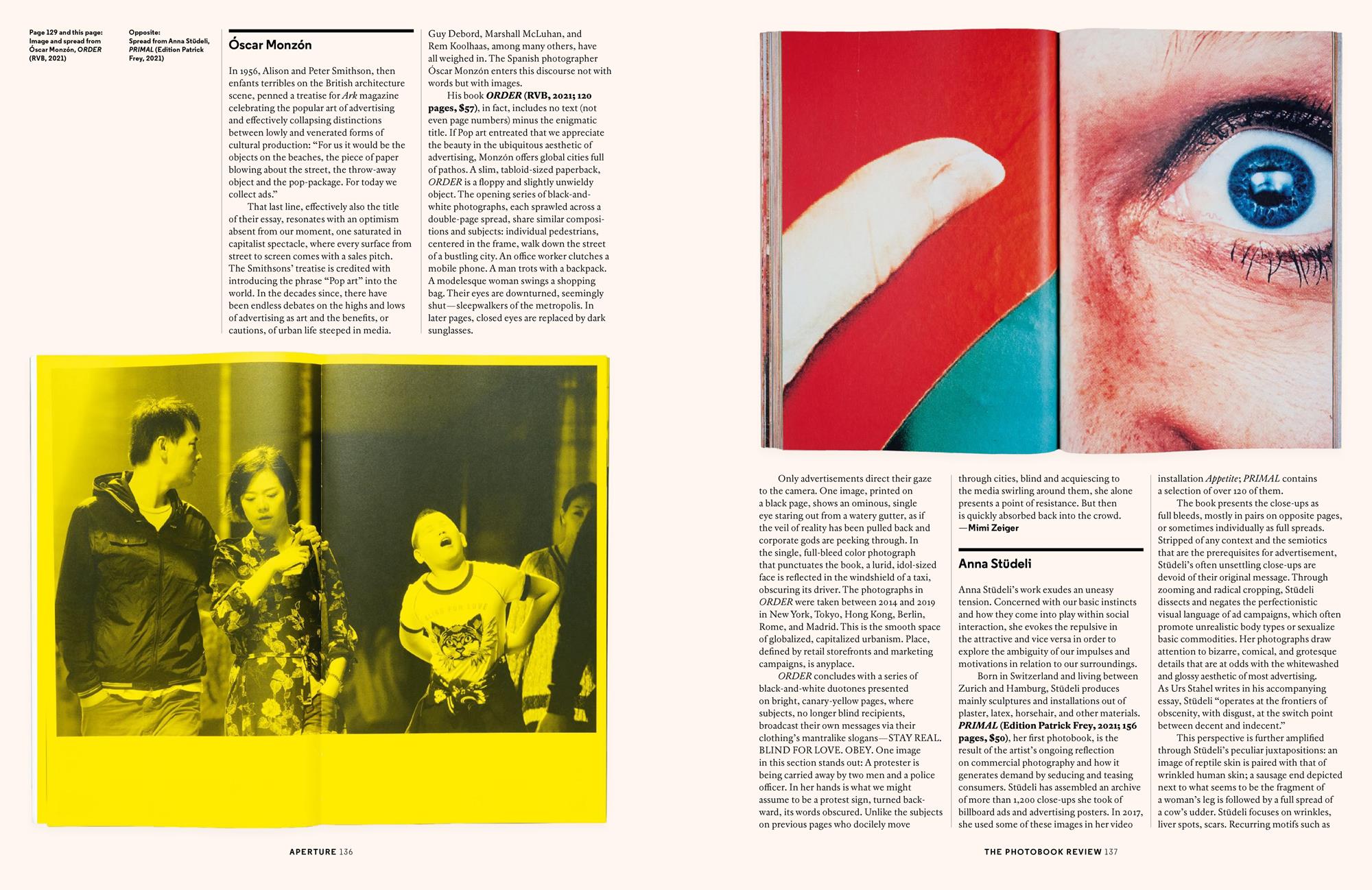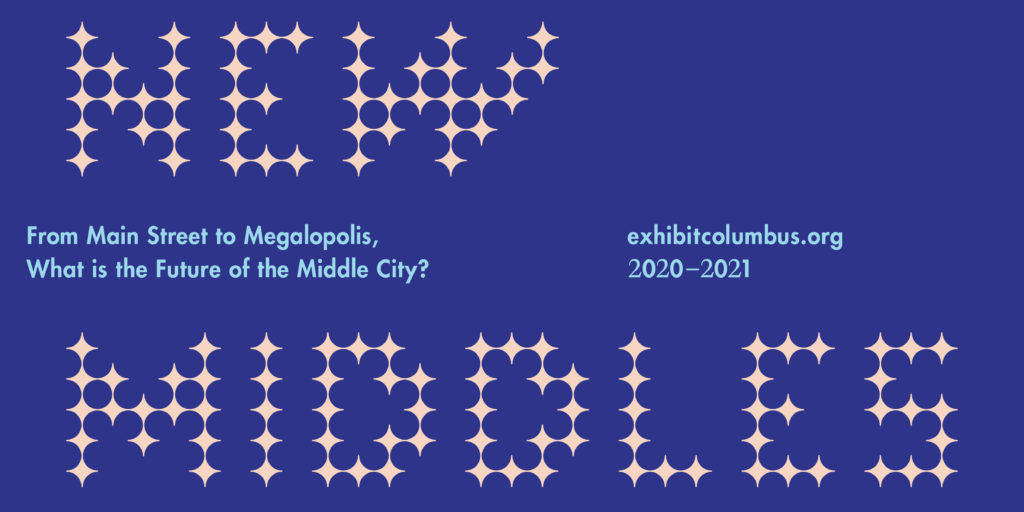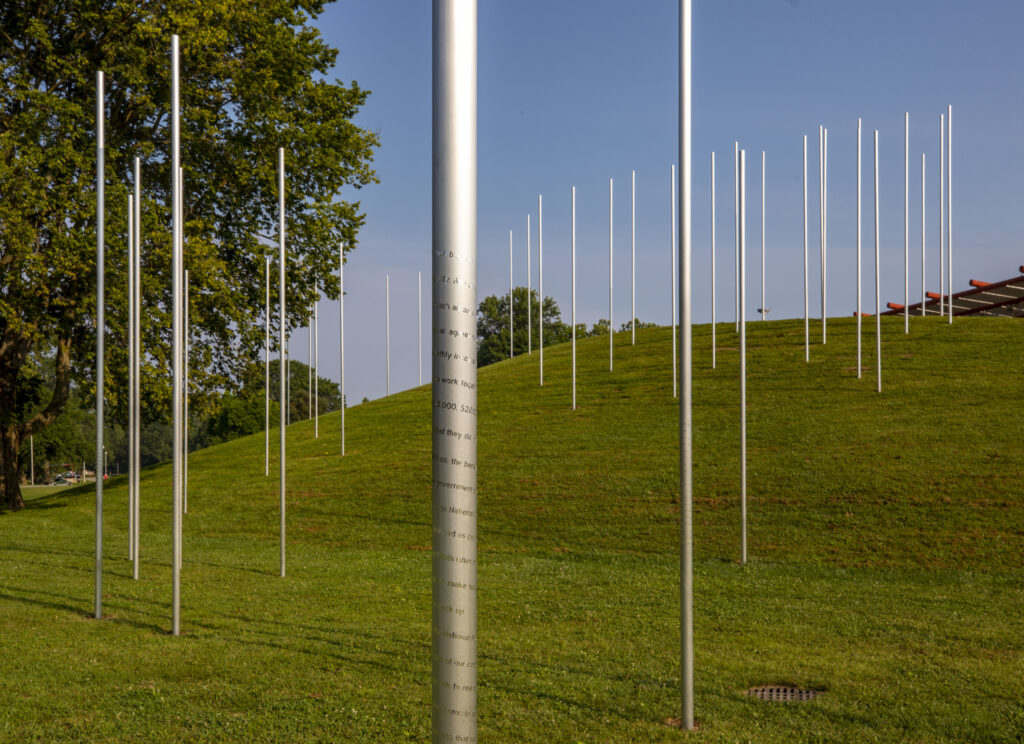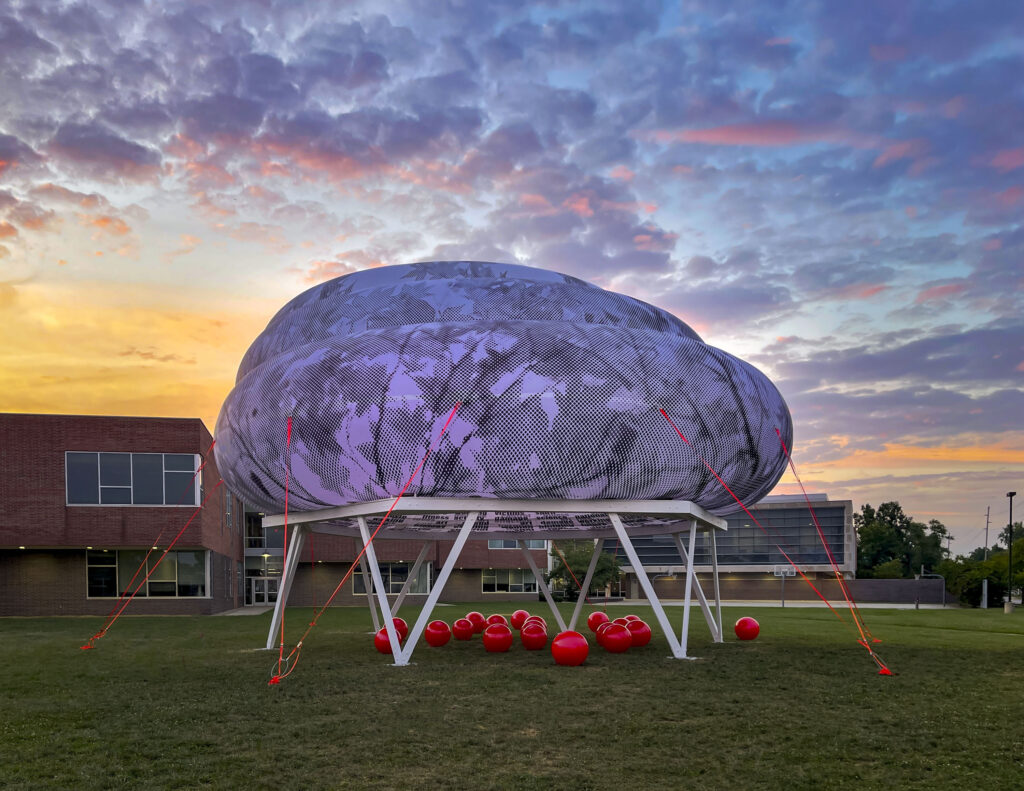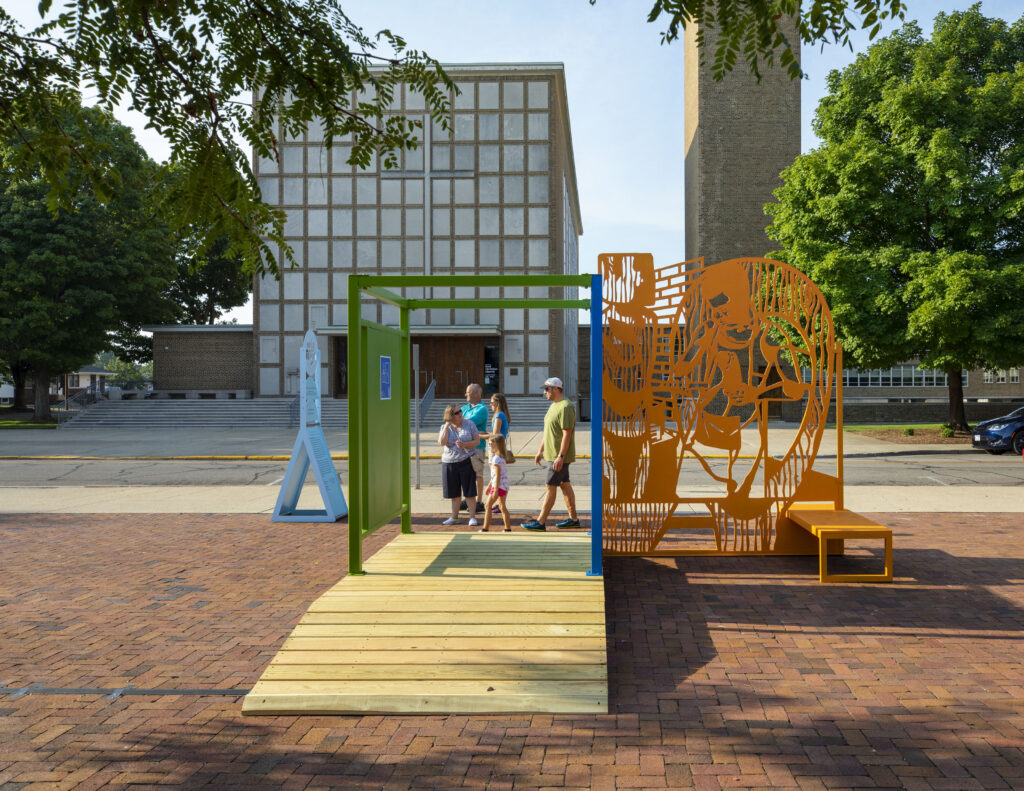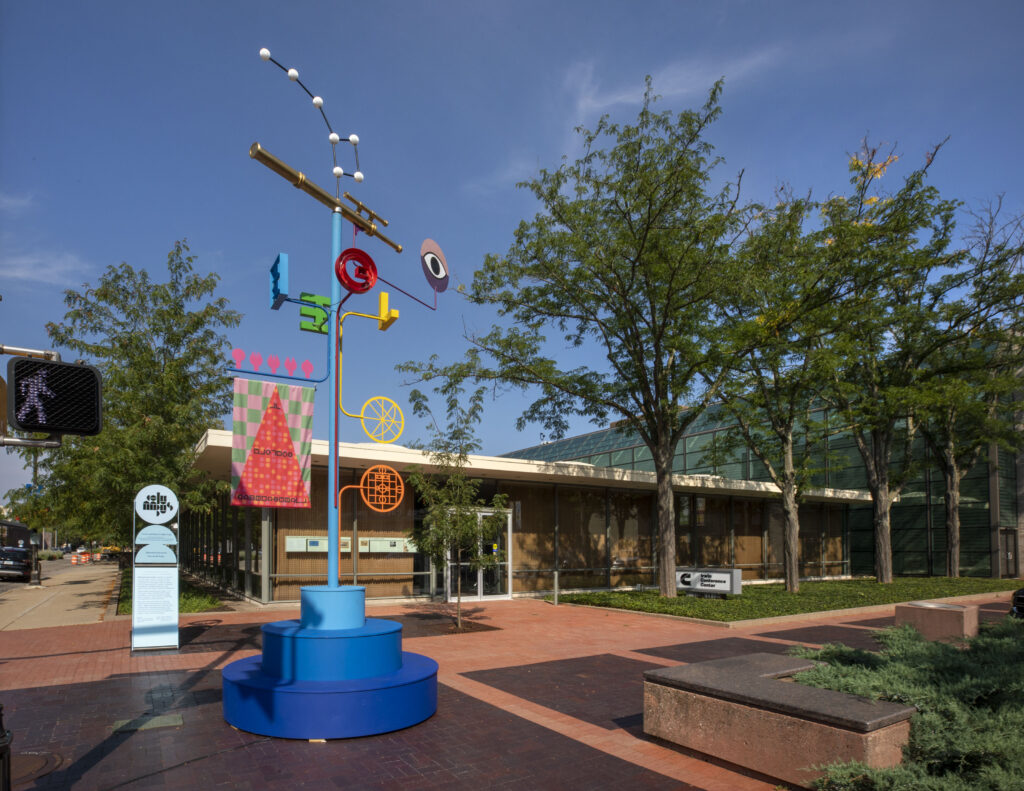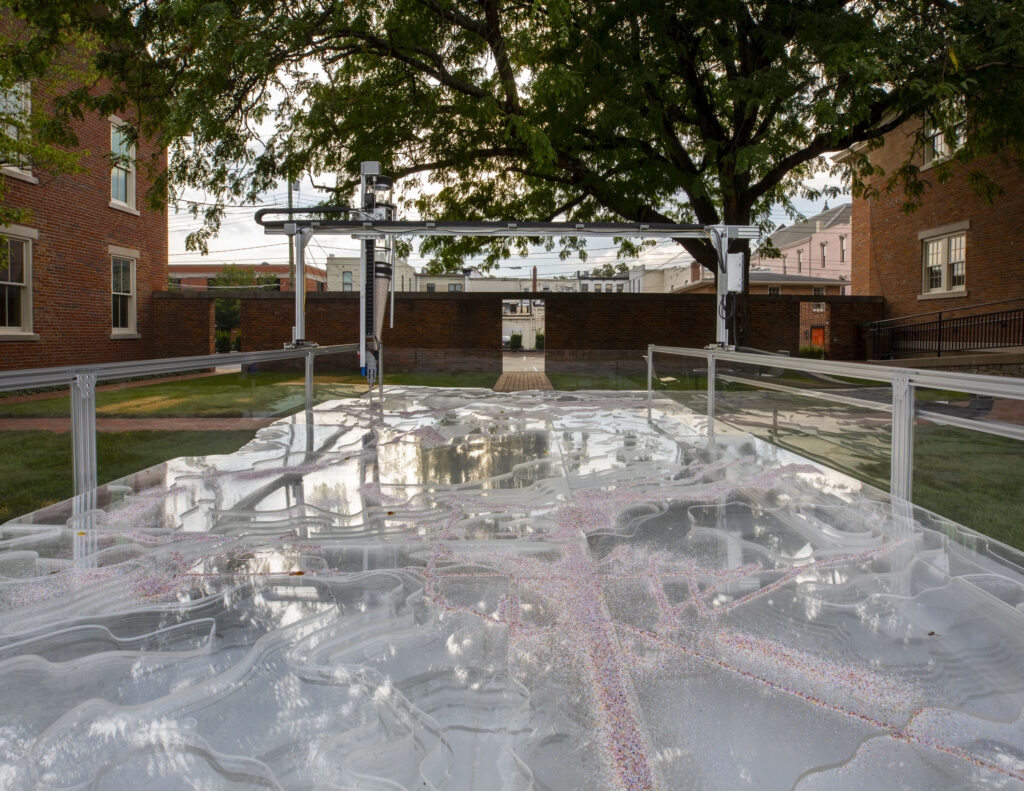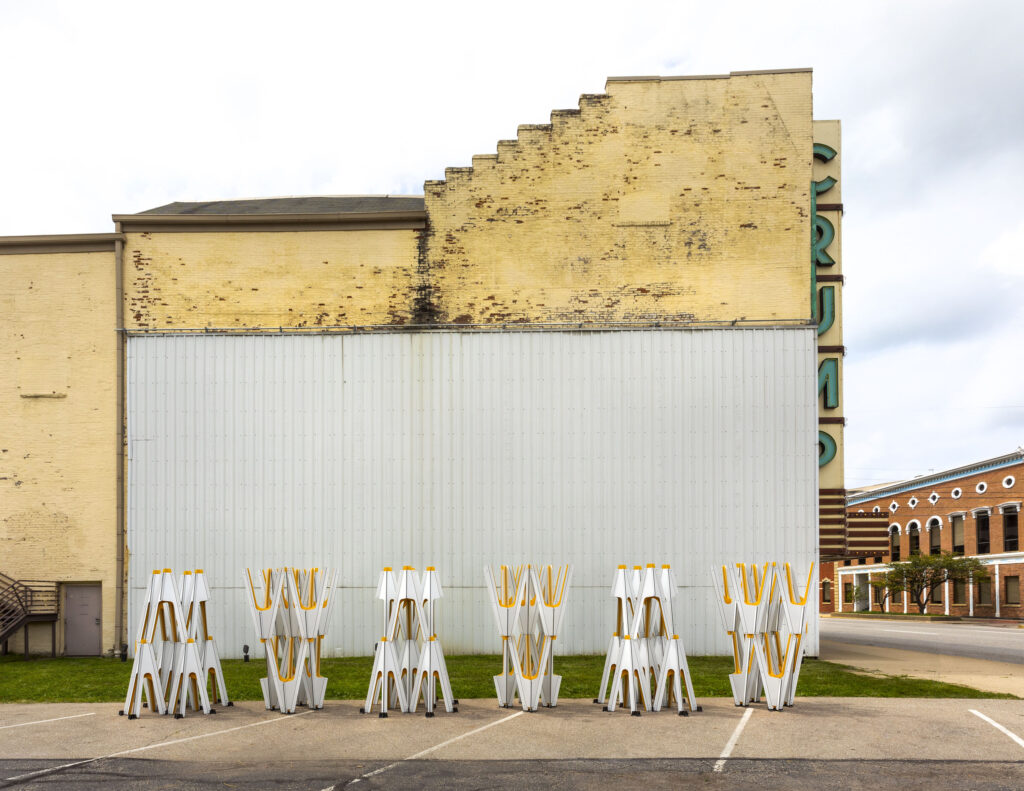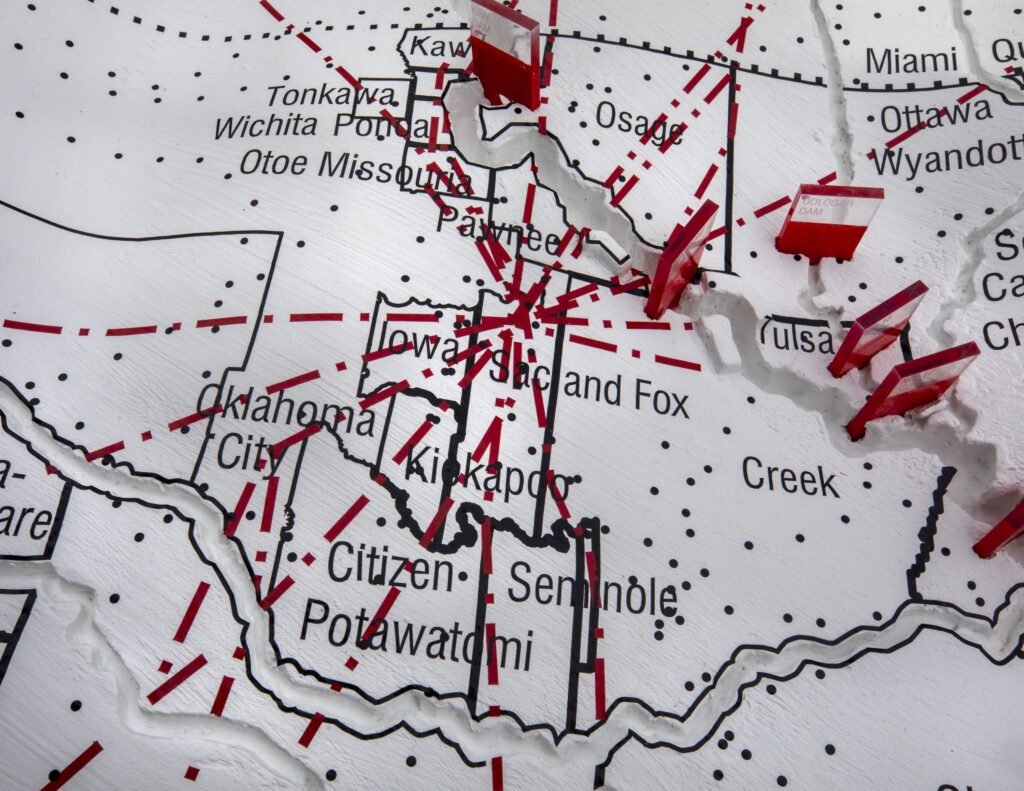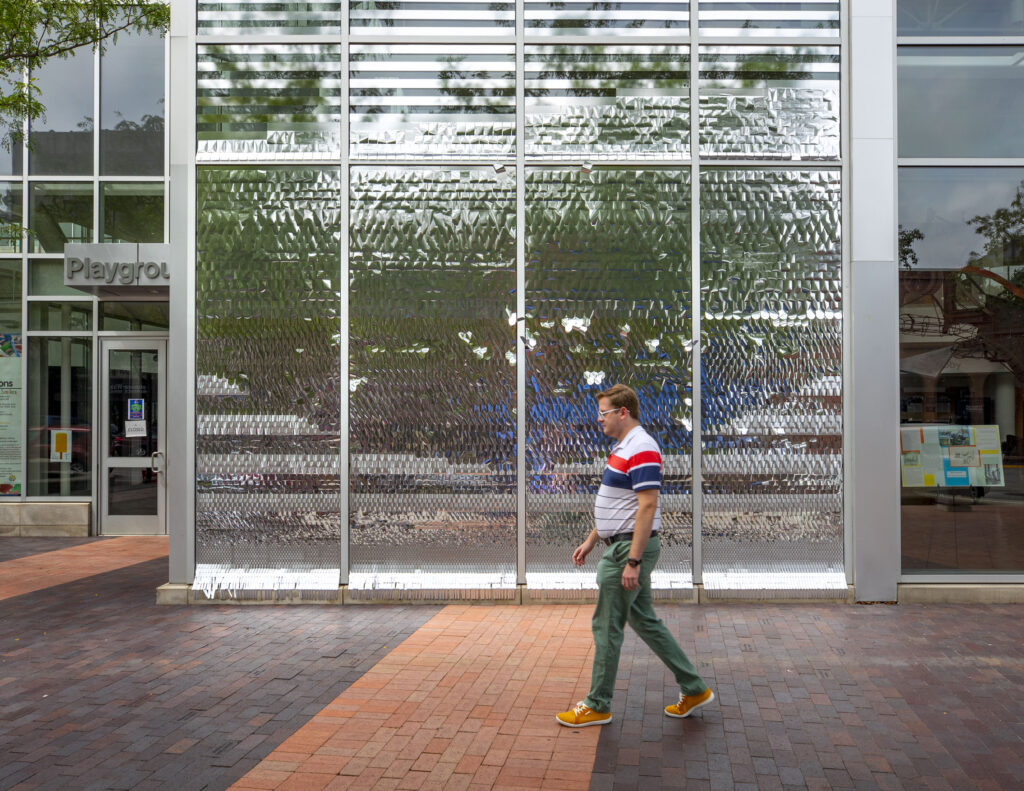In 1956, Alison and Peter Smithson, then enfants terribles on the British architecture scene, penned a treatise for Ark magazine celebrating the popular art of advertising and effectively collapsing distinctions between lowly and venerated forms of cultural production: “For us it would be the objects on the beaches, the piece of paper blowing about the street, the throw-away object and the pop-package. For today we collect ads.”
In early March, just as case numbers and mask requirements were dropping, the New York Times editorial board published an opinion piece titled “Why New York Needs a Covid Memorial.” City and citizens, the op-ed argued, would be stronger if it could “confront its grief instead of trying to outrun it.” The authors were necessarily hazy about shape and size, style and site, but particular about the need for a place for people to gather and mourn.
In year three of the pandemic, the United States is just shy of a million COVID-related deaths. Global deaths are six times that number, with each data point representing an individual with a constellation of loved ones, friends, co-workers left behind. Clearly, there’s a need to honor the dead. But when and how? Read More …
We generally want to interpret contemporary art museums in good faith—not as mausoleums of wealth, but as open, accessible places, removed from the vicissitude of the market and designed to produce an experience, foster education, and nurture communion with art. The recently reopened Museum of Contemporary Art San Diego (MCASD) in La Jolla checks all those boxes, even adding a gentle Pacific breeze and the sound of crashing breakers. Yet the $105 million renovation and expansion gives off monied vibes, accommodating a mushrooming collection and driven by the ambitions of the museum board.
Low-slung on a bluff overlooking the Pacific Ocean and conservatively clad in travertine panels, the expanded Joan and Irwin Jacobs Building, by New York-based Selldorf Architects, greets visitors with a pavilion-like entry shaded by a massive Mission fig tree. Maybe it’s the glass and aluminum storefront facade, or the gift shop positioned to the right of the ticketing desk, but the details smack of high-end retail. The vibe: minimalist, tasteful, functional. In short, everything that Venturi Scott Brown and Associates’ (VSBA) weird, whimsically vaulted Postmodernist lobby is not.
This event is co-organized by Gavin Kroeber & Mimi Zeiger and presented in partnership with SCI-Arc.
The discussion will feature a remarkable group of architects, designers, and planners, including Keller Easterling, Patty Heyda, James Rojas, M. Casey Rehm, and Andrew Zago, along with artists Mary Ellen Carroll and Tim Portlock, journalist Gustavo Arellano.
Sesshu Foster and Arturo Ernesto Romo are authors of ELADATL: A History of the East Los Angeles Dirigible Air Transport Lines. A surrealist history that flows backwards and forwards in time, their novel tells a utopian story about airships and revolution—including how groups like the East LA Balloon Club and the Bessie Coleman Aero Club were hard at work to revolutionize travel, with an aim to literally lift oppressed people out of racism and poverty. The text, a series overlapping narratives and imagined artifacts, grew out of a long collaboration between Foster and Romo and is accompanied by drawings, collages, and photographs.
Based in Alhambra, CA, Foster is an award-winning writer. He taught composition and literature in East L.A. for over 20 years, and at the University of Iowa, the California Institute for the Arts, and the University of California, Santa Cruz. Romo was born and lives in Los Angeles. His artwork, mostly collaborative mixed media works and drawing, has been circulated internationally.
Oakland-based artist Sadie Barnette makes work that is born from her family history — a narrative that is both intensely personal and speaks to a legacy of resistance and opposing societal conditions of racism. Her father, Rodney Barnette, is the subject of much of her work. He was an activist, a member of the Black Panther Party, and later the proprietor of the first Black-owned gay bar in San Francisco. Sadie Barnette’s artworks recontextualize and reimagine these histories, working hundreds of pages of FBI reports into liberatory acts and fantastical objects.
Nearly a decade in the making, its opening pushed back by the pandemic, M+ finally greeted Hong Kong last week. The billboard-like façade of the 700,000-square-foot art museum, designed by Swiss architects Herzog & de Meuron, lit up the budding skyline of the West Kowloon Cultural District with a wall of 5,664 LED tubes. Blue, red, and green from the institution’s logo made watery stripes in Victoria Harbor. Read More …
For the Fall 2021 Exhibition, co-curators Iker Gil and Mimi Zeiger have invited exhibition participants to create site-specific, future-oriented installations, which will be developed over the coming year in response to the theme: New Middles:From Main Street to Megalopolis, What is the Future of the Middle City?
This 2020–2021 cycle of programming explores the future of the center of the United States and the regions connected by the Mississippi Watershed. New Middles speculates on the heartland, an ecology stretching beyond political borders—from North to South—from the Canadian Border to the Gulf, and from East to West—from Appalachia to the plains. Embracing a long timeline of cities past, present, and future, New Middles builds upon Columbus’ legacy as a laboratory for design as civic investment. In a moment when we most need reflection, creativity, and innovation to envision new ways of being, New Middlesconsiders Columbus a place to destabilize assumptions, and imagine new architectures and landscapes as a way to positively move our cities forward.
If you design a different type of medical school, will it produce a different type of doctor?
This question is at the heart of the Kaiser Permanente Bernard J. Tyson School of Medicine, which opened its doors in July 2020, smack in the middle of the pandemic. The 50 students in the inaugural class are, by default, part of an experiment that hopes to integrate an education that highlights well-being and holistic care, an emphasis on social justice, and a new vertical campus that embodies these approaches.
La carretera que conduce a Palm Springs es una salida polvorienta y complicada de la autopista transcontinental 10. Un ejército de gigantescas turbinas eólicas a ambos lados de la State Route 111 en California domina el paisaje desértico, con sus hélices cosechando diligentemente energía para la red eléctrica. La grava y la arena hacen remolinos sobre el asfalto de la carretera que rodea la base desmoronada del monte San Jacinto. Ésta es la puerta de entrada (nada prometedora) al valle Coachella y su afamado centro turístico, y, como la señalización de la carretera anuncia, a “otras ciudades del desierto” con nombres que evocan al místico y árido Oeste: Cathedral City, Rancho Mirage, Indian Wells, Bombay Beach.
